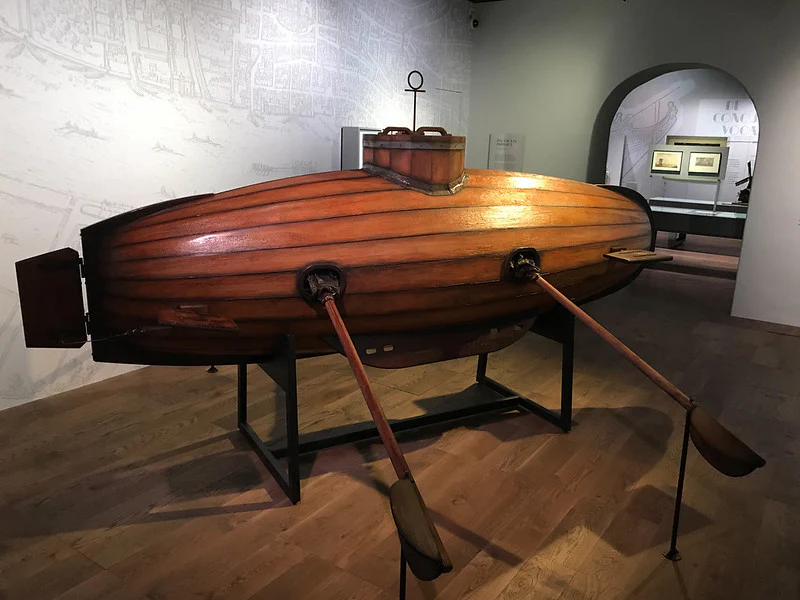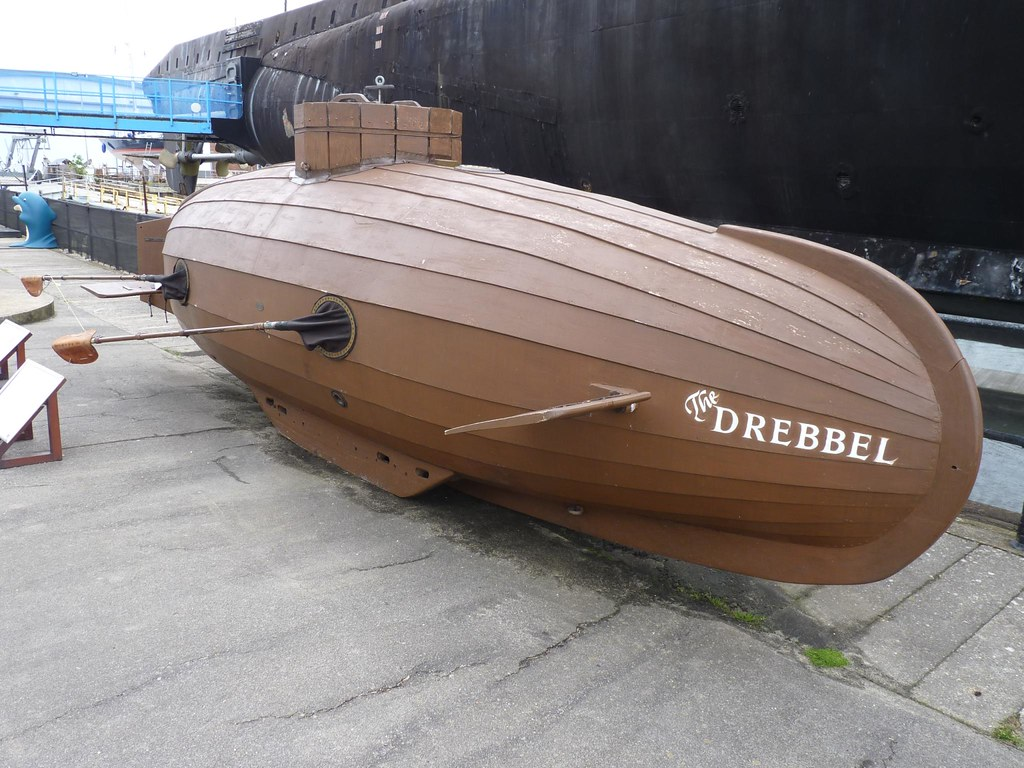In the year 1620, something extraordinary happened beneath the waters of the River Thames. King James I of England, dressed in royal attire, stepped aboard a strange vessel unlike anything the world had ever seen. It wasn’t a ship or a barge it was a submarine. Designed by the brilliant Dutch inventor Cornelis Drebbel, this leather-clad wooden machine quietly slipped below the surface, taking the king on what would become the world’s first recorded royal submarine voyage.
Though it sounds like a chapter from science fiction, this daring experiment was very real. It marked a historic moment not only for England but also for naval engineering, showing that humans could imagine and construct machines to explore the hidden world beneath the sea. And yet, despite its success, Drebbel’s innovation was lost to history.

Cornelis Drebbel: The Inventor Ahead of His Era
Cornelis Drebbel was no ordinary tinkerer. Born in the Netherlands in 1572, he was an inventor, alchemist, and self-taught engineer. His talents drew him to the English court, where he demonstrated strange and marvelous devices from self-regulating ovens to perpetual motion machines.

But his most ambitious creation was the submarine. At a time when most ships were powered by sail and when sea travel was limited to the surface, Drebbel dared to imagine a vessel that could travel underwater. His design featured a wooden frame wrapped in greased leather, sealed tightly to keep out water. It used oars that extended through watertight sleeves, allowing the crew to row while fully submerged.
He even addressed the challenge of breathing underwater. Drebbel reportedly developed a chemical method to refresh the air inside the submarine possibly using oxygen-generating compounds allowing the vessel to remain submerged for extended periods.
Video:
Cornelis Drebbel Alkmaar 1572
The Royal Test on the Thames
After building and testing several prototypes, Drebbel finally unveiled a fully functional model in London. It was large enough to carry up to sixteen passengers and stay underwater for hours a staggering achievement for the early 17th century.
To prove its capability, Drebbel organized a demonstration for none other than King James I. The submarine was launched into the River Thames, and the king himself boarded the vessel for a test run. According to accounts from the time, the submarine traveled several miles beneath the surface while the king observed in awe.
This demonstration was not only a technical success but a historical milestone. King James became the first known monarch to ride in a submarine, experiencing firsthand the possibilities of underwater navigation. The event stirred fascination at the time and confirmed Drebbel’s place as one of the most innovative minds of his generation.

An Invention That Never Took Off
Despite the success of the demonstration and royal support, Drebbel’s submarine never entered military or commercial use. The idea of underwater vessels may have been too far ahead of its time. Naval warfare during that period relied heavily on cannons, sails, and traditional seafaring tactics. The strategic advantage of submarines simply wasn’t recognized or fully understood.
Video:
Submarines
Additionally, Drebbel never published detailed blueprints of his invention. Without widespread documentation or industrial interest, his submarine faded from public consciousness. When Drebbel died in 1633, he passed away in relative obscurity, and his revolutionary concept was shelved for centuries.
It wasn’t until the 19th and 20th centuries that engineers revisited the idea of underwater vessels, eventually giving rise to the modern submarines we know today. And yet, the foundation for those future machines had already been laid by Drebbel in the early 1600s.
Legacy of a Forgotten Genius
Although Cornelis Drebbel’s submarine did not spark immediate change, his vision was a precursor to future exploration and military strategy. Today, submarines are a vital part of naval fleets around the world and are used in research, defense, and deep-sea missions. Every time a submarine slips beneath the waves, it follows in the path carved by Drebbel’s quiet journey on the River Thames.
His story is a reminder that innovation does not always receive recognition in its own time. Some of the greatest breakthroughs in history lie dormant until the world is ready to embrace them. Drebbel may not have lived to see the full impact of his invention, but his name lives on as a pioneer of underwater
exploration.

Conclusion: A Dive into Untapped Potential
The voyage of King James I in Drebbel’s submarine was more than a royal curiosity it was a moment that defied the boundaries of imagination in an era ruled by sails and superstition. While the world around him moved on, Cornelis Drebbel saw the future below the surface. His submarine may have been forgotten by his contemporaries, but history has not ignored his genius.
In a time long before sonar or steel hulls, one man believed humans could explore the depths and for a brief moment in 1620, they did.



